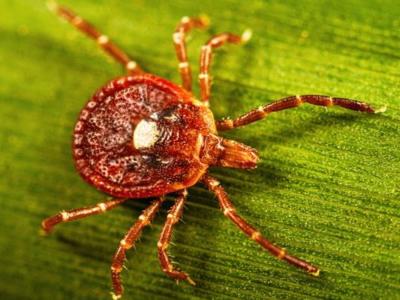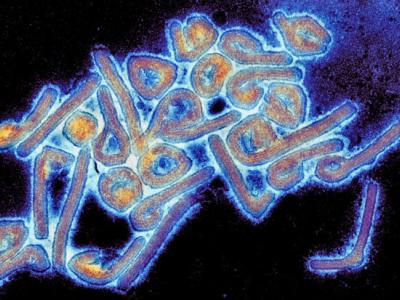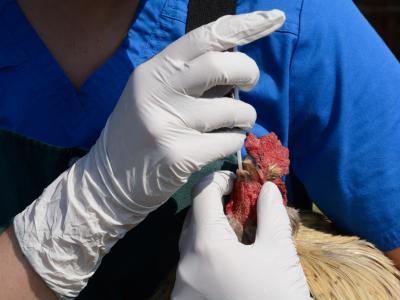COVID continues slow global decline but rises in Europe
In its latest weekly update on the pandemic, the World Health Organization (WHO) said today that global COVID-19 cases declined 6% last week compared to the previous week, though the pace of activity increased in the European region, which experienced an 8% rise compared to the week before.
Of more than 2.9 million cases reported to the WHO last week, the five countries reporting the most cases were Germany, the United States, Japan, China, and France.
Deaths also declined, with levels dropping across all regions. Of 8,300 deaths reported to the WHO last week, the United States by far reported the most, with about 2,700.
At a WHO briefing today, Director-General Tedros Adhanom Ghebreyesus, PhD, said several European countries are now reporting increased cases, hospitalizations, and deaths, which he said is expected as the weather cools and people spend more time together indoors without COVID measures in place.
"We expect reported cases of COVID-19 to increase. But the deaths don't have to, given we have vaccines and therapeutics that can save lives," he said, urging countries to step up surveillance, testing, sequencing, and ensuring that high-risk groups are vaccinated.
Tedros said the WHO and its partners are tracking more than 300 Omicron subvariants.
Oct 5 WHO global COVID situation update
Oct 5 Tedros briefing comments
SARS-CoV-2 Omicron BA.4/BA.5 infection milder than Delta in South Africa
A South African study shows that COVID-19 patients infected with Omicron BA.4/BA.5 subvariants were at similar risk for severe disease and hospitalization as patients infected with the BA.1 (original Omicron) variant but less so than those infected with the Delta variant.
In the study, published yesterday in Nature Communications, researchers from the National Health Laboratory Service in Johannesburg compared rates of severe illness and hospitalization in the country from Oct 1, 2021, to Apr 26, 2022. Median age of patients infected with a known strain was 37 years, and 55.7% were female.
Overall, 884,379 COVID-19 cases were diagnosed, of which 98,710 were likely caused by Delta (1.3%), BA.1 (76.6%), BA.2 (20.3%), or BA.4/BA.5 (1.8%). A total of 13.5% of Delta patients were hospitalized, compared with 4.0% of those infected with BA.1, 3.3% with BA.2, and 4.8% with BA.4/BA.5. Omicron reinfections were more common than those caused by Delta (9.7% for BA.1, 9.3% for BA.2, 11.7% for BA.4/BA.5, and 2.9% for Delta).
After controlling for potential confounding factors, BA.4/BA.5 patients had comparable odds of severe illness (adjusted odds ratio [aOR], 0.72; 95% confidence interval [CI], 0.41 to 1.26) and hospitalization (aOR, 1.24; 95% CI, 0.98 to 1.55) as BA.1-infected patients but lower odds than with Delta.
In addition to geographic factors, risk factors for hospitalization included young age (less than 5 years, aOR 7.09), older age (40 to 59 years, aOR 1.36; 60 years and older, aOR 4.77) and female sex (aOR, 1.09).
Among hospitalized patients with a known outcome, 33.4% were severely ill overall: 57.7% of Delta patients, 33.7% with BA.1, 26.2%, with BA.2, and 27.5% with BA.4/BA.5. A multivariable analysis showed that, compared with BA.1, the odds of severe disease were higher only for Delta (aOR, 2.47).
"As the prevalence of cases due to BA.4/BA.5 lineages increase in other countries, this data may be useful for healthcare resource planning; however, our findings may not be fully extrapolated to other settings with different immune landscapes such as those with a higher proportion of immunity due to vaccination and not previous infection," the researchers wrote.
Oct 4 Nat Commun study
CWD confirmed in another Wyoming deer-hunt area
Wyoming's wildlife department this week announced that chronic wasting disease (CWD) has been confirmed in yet another new deer hunting area, another in the Jackson region in the northwestern part of the state.
In an Oct 3 statement, the Wyoming Game and Fish Department said CWD was detected in samples from a hunter-harvested buck mule deer in September. The newly affected area, defined as deer hunt area 155, is bordered by two areas where CWD had been detected earlier: area 152 to the south in 2019 and Grand Teton National Park to the northwest in 2018.
The Centers for Disease Control and Prevention (CDC) recommends that hunters avoid eating animals that are obviously sick or test positive for CWD, a fatal prion disease. Though CWD has not been found yet in humans, experts worry about the threat to people from eating contaminated meat, similar to bovine spongiform encephalopathy (BSE, or "mad cow" disease).
Oct 3 Wyoming Game and Fish statement
Monkeypox cases down in 17 European countries, up in 7
In an update today, the European Centre for Disease Prevention and Control (ECDC) noted that 17 European countries report a decrease in cases while 7 report increasing cases.
The highest recent notification rates are in Iceland, Spain, and Austria. Spain has the most cases in Europe (7,209), followed by France (3,998), Germany (3,631), the Netherlands (1,215), and Portugal (855).
The ECDC said the likelihood of monkeypox spreading among men who have sex with men (MSM) who have multiple sex partners is still high.
In US news, the Centers for Disease Control and Prevention (CDC) reported 145 more cases, bringing the national total to 26,194. California has the most cases. with 5,010, followed by New York with 3,964.
Oct 5 ECDC report
Oct 5 CDC update
Source remains unconfirmed in Wendy's E coli probe
The CDC yesterday announced that it has wrapped up its investigation into an Escherichia coli O157:H7 outbreak from an unknown food source, which appeared to be an ingredient in menu items from Wendy's restaurants.
In its final update, the CDC reported 12 more cases, lifting the number of confirmed cases to 109 from six states. Of 97 people with available information, 52 (54%) were hospitalized, including 13 with hemolytic uremic syndrome (HUS), a potentially fatal kidney complication. No deaths were reported.
The CDC said investigators couldn't confirm romaine lettuce as the source of the outbreak, because the Wendy's meals eaten by sick people had many similar ingredients. No lab or trace-back data confirmed romaine as the source. Several food items were tested, but none yielded the outbreak strain. Wendy's restaurants where sick people ate were in Indiana, Kentucky, Michigan, New Jersey, Ohio, and Pennsylvania.
Of 82 people who provided a detailed food history, 68 (83%) had eaten at Wendy's the week before they got sick. Patients reported eating a variety of menu items, including burgers and sandwiches. Forty six (68%) reported eating romaine served on burgers and sandwiches.
Whole-genome sequencing of 108 samples predicted resistance to chloramphenicol, streptomycin, sulfisoxazole, tetracycline, and trimethoprim-sulfamethoxazole. Antimicrobial resistance testing of clinical isolates through the CDC's National Antimicrobial Resistance Monitoring System (NARMS) is under way.
Oct 4 CDC final outbreak announcement










